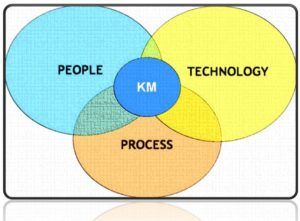Managing Knowledge and Information Systems explained with Knowledge Management Case Study.
Introduction
Knowledge management is an important aspect of every organization. This is because, in a knowledge-based setting, organizations usually encounter problems as they seek to diversify their processes and manage knowledge. Consequently, the need to identify the causes of the problems they face arises, and thus, proffering solutions to this problems become one of the major challenges. This is exemplary in the case study of this paper. TPMT is faced with some challenges that require a high level of knowledge management to solve. In order to address some of these problems, web 2.0 technologies would be needed and applicable, especially when the need to develop customer relationship arises. And since web 2.0 is a technology trend that fascinates perfect information sharing, increased collaboration, and improved functionality of a website, it can further address the major problem under study.
References:
- Business communication. Retrieved April 22, 2016, from https://en.wikipedia.org/wiki/business_communication
- BusinessBalls. customer service. Retrieved April 22, 2016, from https://www.businessballs.com/customer_service.htm
- Communication in Organizations. Retrieved April 22, 2016, from https://www.referenceforbusiness.com/encyclopedia/clo-con/communication-in-organizations.html
- Cunningham, P. (2009). Web 2.0: Issues & Risks. Retrieved April 22, 2016, from https://content.arma.org/imm/janfeb09/walk_in_the_cloud/web_2.0_issues_risks.aspx
- Face-to-Face Communication: The Trust That Helps Build a Business. (2012). Retrieved April 22, 2016, from https://www.healio.com/orthotics-prosthetics/human-resources/news/print/o-and-p-news/{ab5bdfed-6cea-47d6-b2bb-9b57d79c406a}/face-to-face-communication-the-trust-that-helps-build-a-business
- Kooser, A. C. (2007). What Can Web 2.0 Do for Your Business? Retrieved April 22, 2016, from https://www.entrepreneur.com/article/173496
- Levy, M. (2009). WEB 2.0 implications on knowledge management. J Of Knowledge Management Journal of Knowledge Management, 13(1), 120–134. https://doi.org/10.1108/13673270910931215
- Maintaining good communications between branches. Retrieved April 22, 2016, from https://www.nibusinessinfo.co.uk/content/maintaining-good-communications-between-branches
- Stern, J. Introduction to Web 2.0 Technologies , 1–9. Retrieved from https://www.wlac.edu/online/documents/web_2.0 v.02.pdf
- Quarterly, M. K. (2009). How companies are benefiting from Web 2.0: McKinsey Global Survey results. Retrieved April 22, 2016, from https://www.mckinsey.com/business-functions/business-technology/our-insights/how-companies-are-benefiting-from-web-20-mckinsey-global-survey-results
- WebbAppRater Admin. (2010). 7 key features of web 2.0. Retrieved April 22, 2016, from https://webapprater.com/general/7-key-features-of-web-2-0.html
- What is effective communication? definition and meaning. Retrieved April 22, 2016, from https://www.businessdictionary.com/definition/effective-communication.html
- What is web 2.0. Retrieved April 22, 2016, from https://etc.usf.edu/techease/win/internet/what-is-web-2-0/
- Wolcott, M. (2007). What Is Web 2.0? Retrieved April 22, 2016, from https://www.cbsnews.com/news/what-is-web-20/